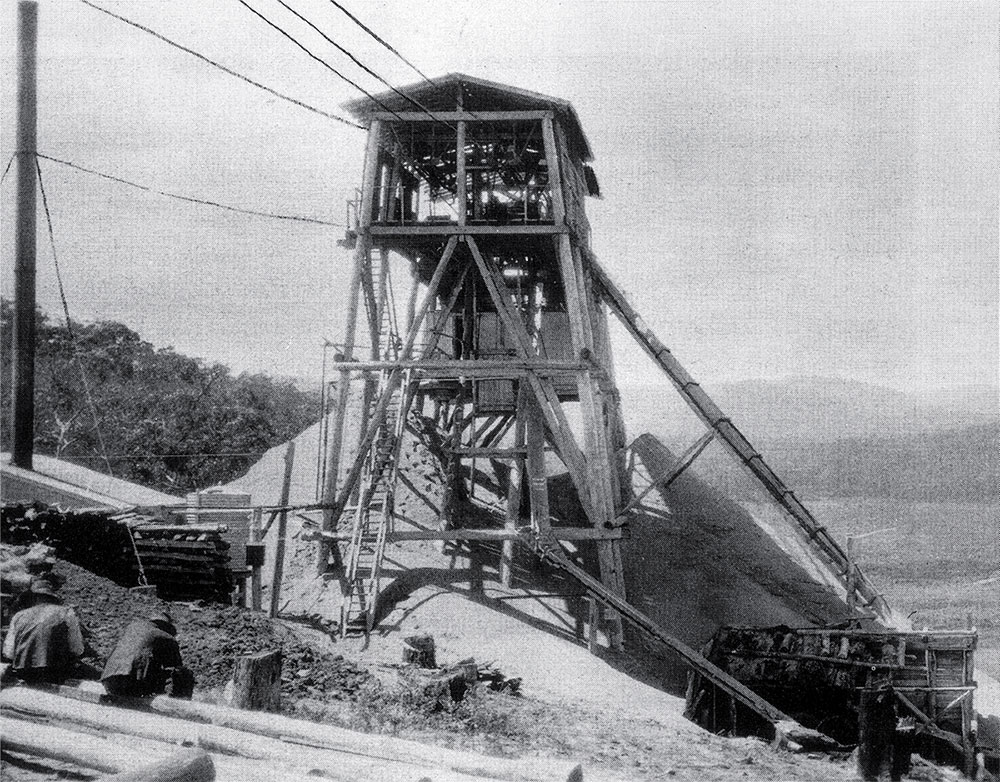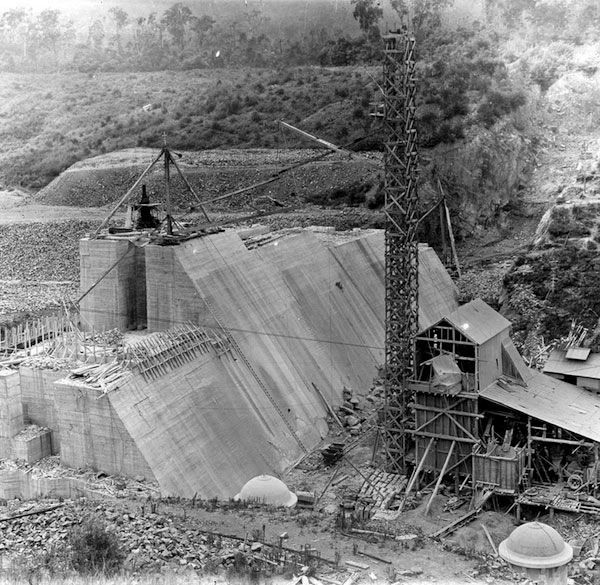Maroondah Reservoir
Maroondah Reservoir was built in the 1920s to increase Melbourne’s water storage capacity. Along with the Maroondah and Coranderrk aqueducts, it is part of the Maroondah water supply system.
Upon completion in 1927 the reservoir submerged the Watts River Weir, which previously fed water into the Maroondah Aqueduct. Today, the reservoir wall – an arched concrete gravity dam – sits an impressive 40 metres high and nearly 300 metres long. The reservoir itself can store up to 22,179 megalitres of water.
View 360-degree panoramas of the reservoir below, using the top-left menu to move between locations, or read more about its construction and picturesque parklands.
Constructing the reservoir
A large number of labourers were needed to build Maroondah Reservoir. They were recruited from across the state, and many were newly-arrived migrants from Italy.
Construction began by clearing trees and installing heavy equipment. All equipment and materials were transported from Melbourne by train, horse and carriage, as well as a bi-cable ropeway – a major undertaking in itself.
Once work began, the sound of jackhammering and explosions was constant. This would continue throughout the night and into the next day.
The project was enormous, taking almost 10 years to complete. Even after the dam was completed in 1927, there was still two more years of planting and landscaping.
Workers living quarters
A small, temporary village was established on site near today’s carpark, to house the large workforce – including some of the labourers’ wives.
The entire village was constructed solely by the ingenuity of the workforce. Each employee had to use their own resources and skills to complete each home, with dwellings ranging from simple tents to elaborate wood and bark houses with windows, doors and corrugated iron roofs.
A great place to visit
Along with impressive dam, the Melbourne Metropolitan Board of Works developed the gardens and picturesque structures at the site.
The park at the base of the dam was constructed immediately after the dam’s completion. Covering approximately 2 hectares, it includes manicured gardens and a vast array of formal plantings, mainly of exotic trees. It was made for the enjoyment of the public, and is still considered one of the most significant designed landscapes in the state.

